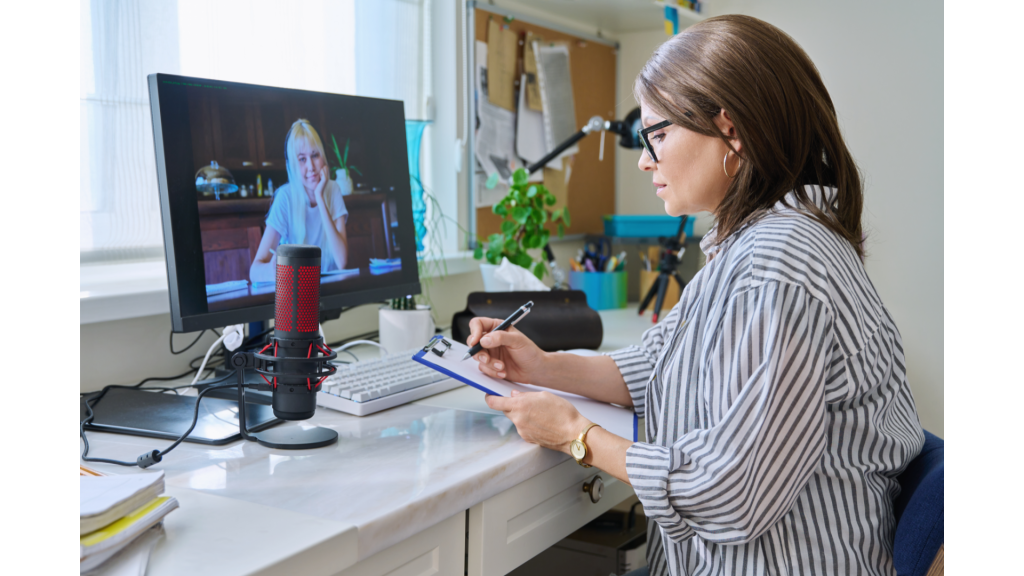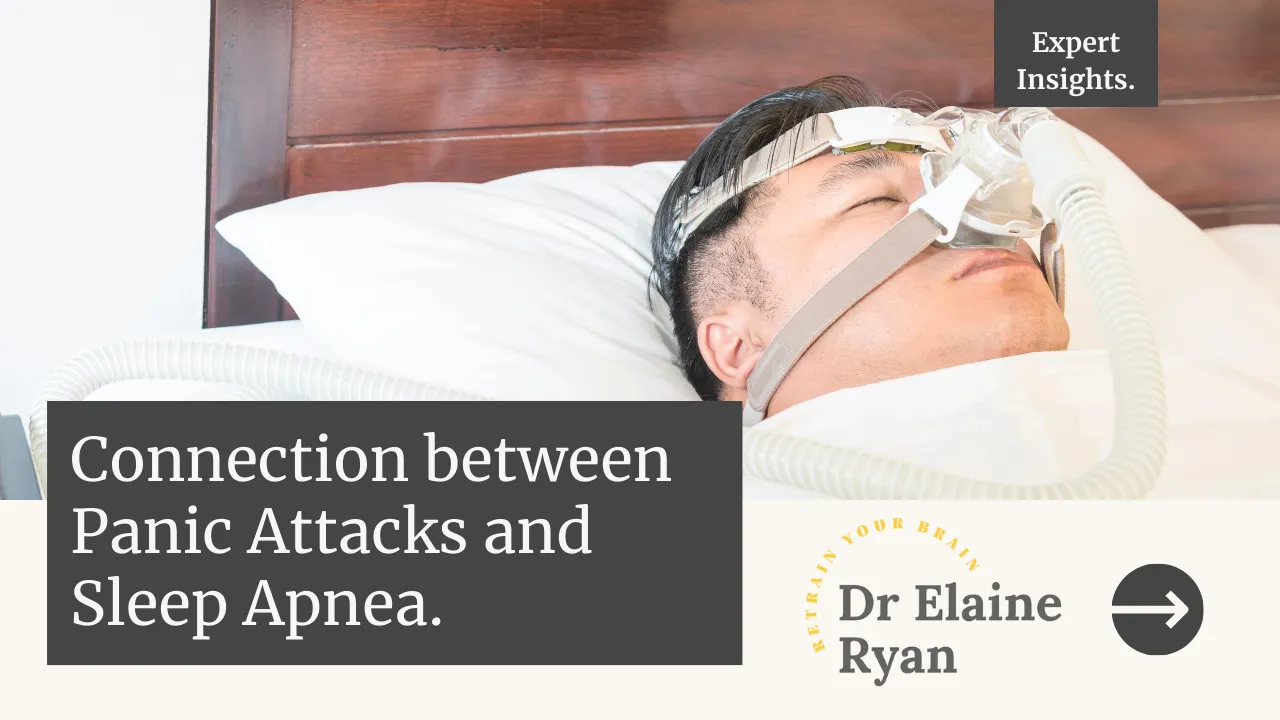Sleep apnea and panic attacks are two conditions that can significantly affect your quality of life. I’ve written about medical conditions to rule out before diagnosing panic attacks, but to be honest, it is only very recently that I can really appreciate the impact of sleep apnea, after I have recently been diagnosed myself. Many of you know that I had panic disorder but since starting CPAP treatment it really got me thinking again about the importance of underlying conditions. While they may seem unrelated, emerging research suggests a complex interplay between the two.
Sleep apnea, a disorder characterized by interrupted breathing during sleep, can lead to a host of health issues. These range from daytime fatigue to serious cardiovascular problems. For me, my apnea resulted in crushing insomnia, only being able to sleep between 3 and 5 hours per night, night sweats and needing to pee several times during the night, sometimes every hour. I only recently discovered that, as explained better by UrologyHealth, a hormone is produced at night to lower urine production and stop the need to pee. However, this does not happen with sleep apnea, hence the need to get up several times a night.
On the other hand, panic attacks, a form of anxiety disorder, are characterized by sudden bouts of intense fear and discomfort. Understanding the connection between these two conditions can provide valuable insights into their management and treatment, as you might be getting treated for panic attacks only to find out later that you have a sleep condition that requires a mask as opposed to medication or CBT.
Panic Attacks Self-help

Dr Ryan’s online self-help course for Panic Attacks
Understanding Sleep Apnea and Its Symptoms
Sleep apnea is a prevalent sleep disorder. It is characterized by repeated interruptions in breathing during sleep. These interruptions can last from a few seconds to minutes and may occur 30 or more times per hour.
The term “apnea” refers to a breathing pause that lasts at least ten seconds. During an apnea episode, the muscles in the back of the throat fail to keep the airway open, despite efforts to breathe.
This condition can lead to a decrease in blood oxygen levels, causing the heart to pump harder. You can also have hypopneas, I have these too. As explained in more details by DentalSleepMedicine, a hypopnea is slow shallow breathing, where oxygen lowers and also causes a whole health of health problems.
What is of interest to me, both on a personal level as I suffer from both, but also on a professional level as a psychologist, is that during an event, either apnea or hypopnea, your body jolts you awake to breathe, it sounds a alarm, a stress response. Depending on how many events you have per hour, for me it was 15, your body goes into an extreme state of panic, as you literally stop breathing.
Types of Sleep Apnea
There are three main types of sleep apnea: Obstructive, Central, and Complex.
Obstructive Sleep Apnea (OSA) is the most common form. It is caused by a blockage of the airway, usually when the soft tissue in the back of the throat collapses during sleep.
Central Sleep Apnea (CSA), on the other hand, is not caused by a blockage. Instead, the brain fails to signal the muscles to breathe due to instability in the respiratory control centre.
Recognizing Sleep Apnea Symptoms
Recognizing the symptoms of sleep apnea is crucial for early diagnosis and treatment.
Common symptoms include:
- Loud snoring
- Episodes of breathing cessation during sleep
- Abrupt awakenings accompanied by shortness of breath
- Morning headaches
- Excessive daytime sleepiness
It’s important to note that not everyone who snores has sleep apnea.
However, if you experience one or more of these symptoms, it’s advisable to consult a healthcare professional for further evaluation.
Panic Attacks: Symptoms and Triggers
Panic attacks are sudden episodes of intense fear or discomfort. You can read more about panic here. They can occur unexpectedly or in response to a specific trigger.
Symptoms of a panic attack can include:
- Palpitations or accelerated heart rate
- Sweating
- Trembling or shaking
- Sensations of shortness of breath or smothering
- Feeling of impending doom
These symptoms can be so severe that individuals often feel they are having a heart attack or other life-threatening condition.
It’s important to understand that while panic attacks are frightening, they are not physically dangerous.
The Physiology of Panic Attacks
Panic attacks are linked to the body’s fight-or-flight response. This is a survival mechanism that prepares the body to respond to a perceived threat.
During a panic attack, the body’s sympathetic nervous system is activated. This leads to physical symptoms such as rapid heartbeat, sweating, and trembling.
Understanding the physiological basis of panic attacks can help individuals manage their symptoms and seek appropriate treatment.

The Link Between Sleep Apnea and Panic Attacks
Sleep apnea and panic attacks may seem unrelated, but research suggests a connection. Sleep apnea can disrupt normal sleep patterns, leading to increased stress and anxiety.
This heightened state of anxiety can mimic or even trigger panic attack symptoms. Furthermore, the physiological effects of sleep apnea, such as hypoxemia, can have direct impacts on the brain, potentially leading to panic attacks.
Conversely, the stress and anxiety associated with panic attacks can exacerbate sleep apnea symptoms. This creates a vicious cycle that can be difficult to break without proper treatment.
How Sleep Apnea Can Trigger Panic Attacks
Sleep apnea can lead to episodes of hypoxemia, where the oxygen level in the blood drops. This can cause feelings of breathlessness, a common symptom of panic attacks.
Moreover, the frequent awakenings associated with sleep apnea can lead to increased anxiety. This heightened state of anxiety can trigger panic attacks, especially in individuals already prone to them.
Understanding this connection can help in the development of effective treatment strategies for individuals suffering from both conditions.
The Bidirectional Relationship
The relationship between sleep apnea and panic attacks is bidirectional. This means that not only can sleep apnea trigger panic attacks, but the stress and anxiety associated with panic attacks can also exacerbate sleep apnea symptoms.
This bidirectional relationship can make it challenging to manage both conditions. However, understanding this connection is crucial for developing effective treatment strategies.
Addressing both conditions simultaneously can lead to improved sleep quality, reduced anxiety, and a better overall quality of life.
Diagnosing Sleep Apnea and Panic Disorder
Diagnosing sleep apnea and panic disorder can be a complex process. Both conditions share common symptoms such as shortness of breath and increased anxiety, which can lead to misdiagnosis.
Moreover, sleep apnea is often underdiagnosed due to its subtle symptoms. Many individuals with sleep apnea are unaware of their condition, attributing their symptoms to other causes such as stress or poor sleep hygiene.
On the other hand, panic disorder is a mental health condition that requires a thorough psychological assessment for accurate diagnosis. It is crucial to differentiate panic attacks from other anxiety disorders for effective treatment.
The Role of Sleep Studies and Psychological Assessment
Sleep studies, or polysomnography, play a crucial role in diagnosing sleep apnea. This involves monitoring the patient’s sleep patterns, breathing, heart rate, and blood oxygen levels overnight.
Polysomnography can help identify episodes of breathing cessation, a hallmark of sleep apnea. It can also detect other sleep disorders, such as insomnia, that may contribute to panic attacks.
Psychological assessment, on the other hand, is essential for diagnosing panic disorder. This involves evaluating the patient’s mental health history, symptoms, and triggers. Understanding the patient’s psychological profile can help tailor treatment strategies to their specific needs.
Treatment Options and Management Strategies
Managing sleep apnea and panic attacks requires a comprehensive approach. Treatment strategies should address both the physical symptoms of sleep apnea and the psychological aspects of panic disorder.
For sleep apnea, treatment options may include lifestyle changes, Continuous Positive Airway Pressure (CPAP) therapy, and in some cases, surgery. On the other hand, panic attacks may be managed through cognitive-behavioral therapy, medication, and stress management techniques.
- Sleep apnea treatments: Lifestyle changes, CPAP therapy, surgery
- Panic attack treatments: Cognitive-behavioral therapy, medication, stress management
Addressing Sleep Apnea
Addressing sleep apnea often begins with lifestyle changes. This may include weight loss, regular exercise, and avoiding alcohol and sedatives.
For moderate to severe cases, CPAP therapy is commonly recommended. This involves wearing a mask over the nose and/or mouth during sleep, which provides a continuous stream of air to keep the airways open.
In some cases, surgery may be necessary to remove or shrink excess tissue in the throat or to reposition the jaw to improve airflow during sleep.
Managing Panic Attacks
Managing panic attacks often involve cognitive-behavioural therapy (CBT). CBT helps individuals understand and change thought patterns that lead to panic attacks.
Medication, such as selective serotonin reuptake inhibitors (SSRIs) or benzodiazepines, may also be prescribed. These drugs can help reduce the frequency and severity of panic attacks.
In addition, stress management techniques, such as deep breathing, progressive muscle relaxation, and mindfulness, can help manage panic symptoms. Regular practice of these techniques can help individuals control their panic attacks.
Conclusion: Improving Mental Health and Sleep Quality
Understanding the connection between sleep apnea and panic attacks is crucial for effective treatment. By addressing both conditions, individuals can improve their sleep quality, reduce panic symptoms, and enhance their overall mental health.
Continued research and patient education are key to improving outcomes for those living with sleep apnea and panic disorder.
